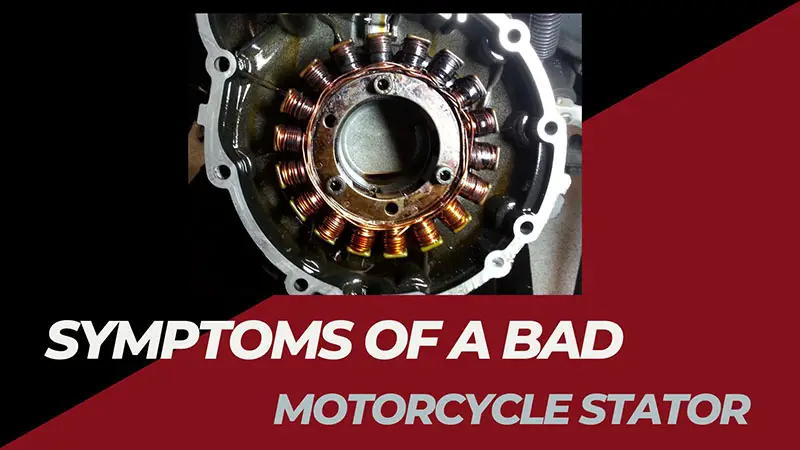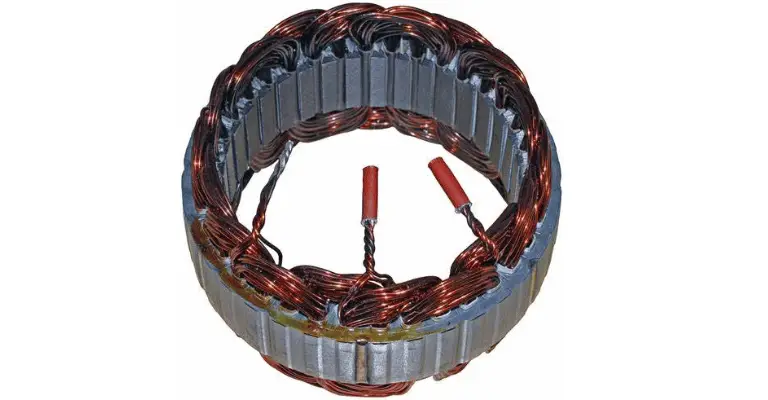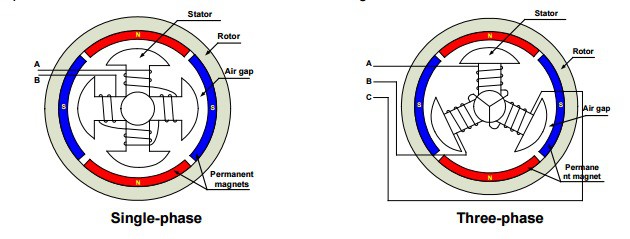The stator is one of the key elements in the charging system of a Harley Davidson motorcycle. It is an integral part of the alternator and is responsible for generating electricity to charge the battery and power the bike’s electrical components. However, like any other mechanical part, the stator can wear out over time and need replacement. The cost of replacing a Harley Davidson stator can range from a few hundred to over a thousand dollars, depending on various factors. This article provides an in-depth look into the stator replacement process and how you can potentially save on costs.
When Do You Need To Replace The Stator On A Harley?
The need for a stator replacement usually arises when the stator begins to fail or has already failed. Some common signs of a failing stator include dim lights, electrical problems, decreased fuel economy, and a battery that does not hold charge.

Graphic courtesy of lazerhelmets.com
If the stator completely fails, the motorcycle might not run at all. Therefore, it is vital to keep an eye on the health of your stator and replace it when necessary to avoid being stranded or damaging other components of your Harley Davidson.
How Long Do Stators Last On Average?
The lifespan of a stator can vary significantly depending on the make and model of the Harley Davidson, the riding conditions, and how well the bike is maintained. On average, a stator can last between 15,000 to 30,000 miles. However, this is just a guideline, and some stators may last longer or shorter depending on the circumstances.
Read next: How Long Do Harleys Last?
What’s The Average Harley Davidson Stator Replacement Cost?
The average cost of a Harley Davidson stator replacement can range from $500 to $1500. This includes the cost of the stator itself, which can be between $100 and $300, and labor costs, which can be between $400 and $1200. The cost can vary depending on where the bike is serviced, the model and year of the Harley Davidson, and the type of stator used.
Related articles:
> Harley Davidson Drive Belt Replacement Cost
> Harley Davidson Engine Rebuild Cost
> Harley Davidson Clutch Replacement Cost
> Harley Oil Change Cost
> Harley Davidson Key Replacement Cost (Full Overview)
Can You Buy Aftermarket Parts or Only Dealer Direct?
When it comes to Harley Davidson stator replacements, you have the option of choosing between OEM (Original Equipment Manufacturer) parts and aftermarket parts. OEM parts are made by the manufacturer, in this case, Harley Davidson, and are designed to fit and function exactly like the original part.

Aftermarket parts, on the other hand, are manufactured by third-party companies and are often less expensive than OEM parts. The choice between the two depends on personal preference, budget, and the specific needs of your Harley Davidson. My word of recommendation, always make sure that the wiring harness connections are compatible… BEFORE you attempt to install the part.
Can You Replace a Harley Stator By Yourself?
Yes, replacing a Harley Davidson stator is a task that can be accomplished by a mechanically inclined individual with the right tools and instructions. However, it is not a job for the faint-hearted or inexperienced. The process involves dismantling parts of the motorcycle, carefully removing the old stator, installing the new one, and reassembling everything. It requires a good understanding of the motorcycle’s electrical system, attention to detail, and patience.
Motorcycle Charging System Components
Here’s a brief overview of a motorcycle’s charging system, so you can assess the situation for yourself.
- Alternator/Stator: This is a coil of wire that generates alternating current (AC) electricity as the engine runs. In motorcycles, the stator is typically located near the engine and is rotated by the crankshaft.
- Rotor/Flywheel: This is a magnet that spins around the stator, inducing electrical current in the stator windings.
- Rectifier/Regulator: The rectifier converts the AC electricity generated by the stator into direct current (DC) electricity, which can be used to charge the battery and power the motorcycle’s electrical systems. The voltage regulator ensures that the voltage level remains within safe limits to prevent damage to the battery and electrical components.
- Battery: The battery stores electrical energy and provides power to start the motorcycle and run electrical components when the engine is off.
What to Consider
When determining the cost of the replacement, you should consider a few things:
- What model year bike
- where it was purchased
- the condition of the stator
- and what type of stator
Now, let’s dive deeper.
Which Model Harley (And What Year)
The model and year of your Harley Davidson can significantly influence the cost of replacing the stator. Some models are more complex and require more labor to replace the stator, which can increase the cost. Additionally, newer models may have more expensive parts.
Where Was It Purchased
Where you purchase the stator can also affect the cost. Buying the part from a dealership is often more expensive than buying it from an independent mechanic or online.
Condition Of The Stator
The condition of the stator can also influence the cost of replacement. If the stator is in bad condition, it may require more work to remove and replace, increasing the overall cost.
What Type of Stator (2 Phase or 3 Phase)
The type of stator used in your Harley Davidson can also affect the cost. There are two types of stators: two-phase and three-phase. Two-phase stators are typically less expensive than three-phase stators, but they also produce less power.

How Much Does It Cost To Replace A Harley Davidson Stator At Home?
If you decide to replace the stator yourself, you can save significantly on labor costs. The only costs you would incur would be for the stator itself and any necessary tools you don’t already own. This could bring the total cost of the stator replacement down to as low as $100 to $300, depending on the price of the stator.
Quick Overview of Replacing A Stator At Home (How-To)
Replacing a stator at home involves several steps, including:
- Draining the primary: This involves removing the primary cover and draining the primary fluid.
- Removing the rotor, clutch basket, and primary chain assembly: This requires removing the nut that holds the assembly in place and then carefully removing the assembly itself.
- Removing the stator: After the assembly is removed, you can access and remove the stator.
- Installing the new stator: Install the new stator and reconnect the wires. Be sure not to damage the output wires to the voltage regulator.
- Reassembling the motorcycle: Once the new stator is installed and connected, you can reassemble the motorcycle.
This is a simplified overview of the process, and it’s recommended to have a detailed guide or service manual to refer to during the procedure Sometimes, you can find a dedicated forum community that is familiar with the process. Alternatively, check out this video that will walk you through the process:
[su_youtube_advanced url=”https://www.youtube.com/watch?v=mstUlGFMyK0&t” title=”This video is a thorough guide on replacing a stator on Harley Davidson motorcycles.”]
How To Save Money When Replacing A Harley Stator
There are several ways to save money when replacing a Harley stator:
- Do it yourself: As mentioned above, doing the replacement yourself can save a significant amount on labor costs.
- Shop around for parts: Shopping around for the best price on a stator can also save you money. Consider both OEM and aftermarket parts, and check prices at multiple retailers.
- Maintain your bike: Regular maintenance can prolong the life of your stator and other components, potentially saving you money in the long run.
Recap of Main Points
Replacing the stator on a Harley Davidson motorcycle is a task that can be tackled by mechanically inclined individuals, but it’s not for everyone. The cost of replacement can vary widely, depending on several factors including the model and year of the bike, where you purchase the stator, and the condition of the stator. Doing the replacement yourself can save significantly on labor costs, but it’s important to have a detailed guide or service manual to refer to during the process.
FAQs
Do I need a special tool to take out the outer primary cover?
No special tool is required to remove the outer primary cover. It can generally be removed with standard tools.
When reinstating the new stator, can I use the old washers and spacers?
It’s recommended to use new washers and spacers when installing a new stator to ensure a proper fit and function.
I’ve heard frightening things about changing the belt; how bad is it?
Changing the belt on a Harley Davidson can be challenging, especially for those without mechanical experience. However, with the right tools and instructions, it’s a task that can be accomplished.
How can I tell if my Harley Davidson stator is not good?
Signs of a bad stator can include dim lights, electrical problems, decreased fuel economy, and a battery that doesn’t hold a charge. If you suspect a bad stator, it’s best to have it checked by a professional.
What does the stator do on a motorcycle?
The stator is an essential part of the motorcycle’s charging system. It generates electricity to charge the battery and power the bike’s electrical components. A failing or failed stator can lead to a variety of problems, including a bike that won’t start or run.
By understanding the importance of the stator in your Harley Davidson and how to replace it, you can ensure your bike operates at peak performance and avoid costly repairs down the line.